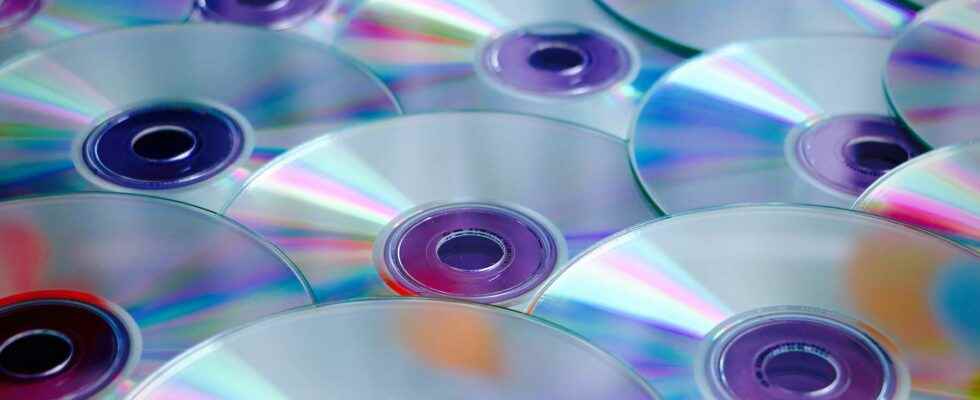An optical disc is a medium for digital storage on which data (information, audio, video, etc.) can be recorded and read. The most common types of optical discs are CDs, DVD or Blu-rays. An optical disc is made of a layer of polycarbonate, a material plastic transparent in which are engraved microscopic reliefs. It is covered with a metallic layer and a layer of protective lacquer, then a layer of polymer where the information is written (name of the artist, software, movie, etc.).
How an optical disc works
- Recording: Information is etched in a spiral pattern on a single metal groove called a track. This track, which can be several kilometers long, is a series of hollows (pity) and dishes (land). Each pit measures between 125 and 833 nanometers long.
- Reading: one laser send rays infrared on the CD which are going to be reflected by a mirror. When the disk rotates and the beam encounters a flat, the information is encoded at 0. When the beam encounters a trough, part of the beam is reflected by the flat and the other by the trough. The phase difference is destructive and produces a interference which will be coded in 1.
Recordable discs work a little differently. A blank recordable disc (CD-R) has a layer of matter organic (cyanine, phthalocyanine, AZO), which is rendered opaque when the disc is burned. When the laser reads the data, the opaque area returns less than light and is therefore perceived as a trough. For a rewritable disc (like a CD-RW), the polycrystalline layer can be made opaque or transparent depending on the temperature of the laser.
Different optical discs
- The CD can store music (audio CD) or digital data (CD-Rom). It contains between 500 and 800 megabytes (MB) of data.
- The DVD stores videos. It can record information on multiple layers, which increases its storage capacity. It contains between 4.7 and 8 GB of data.
- The Blu-Ray, licensed by Sony, stores videos in high definition. Its storage capacity ranges from 25 to 100 GB.
You will also be interested
[EN VIDÉO] 3 unusual ways to store digital data To store files, music or videos, most of us use DVD or hard drive. But researchers have developed sometimes surprising alternative methods.
Interested in what you just read?
.
fs2
